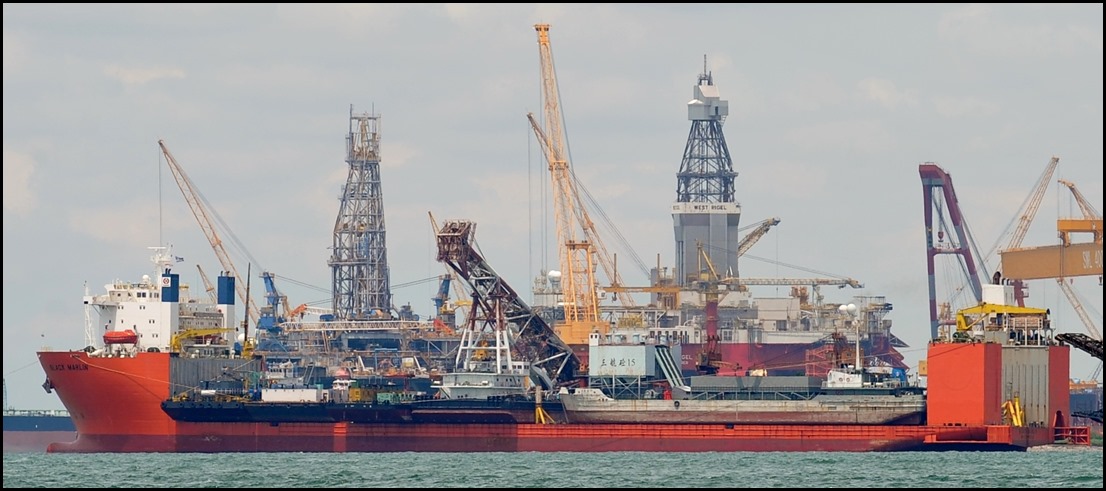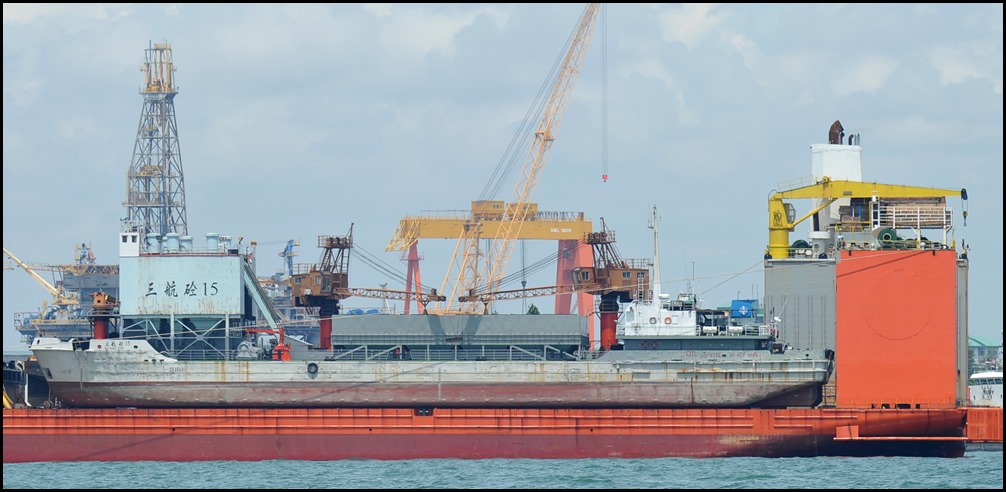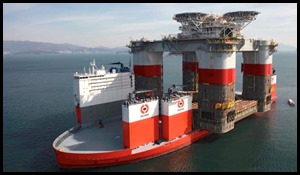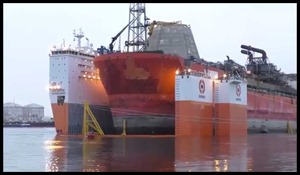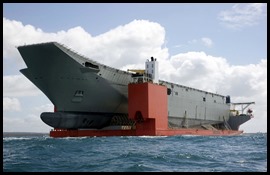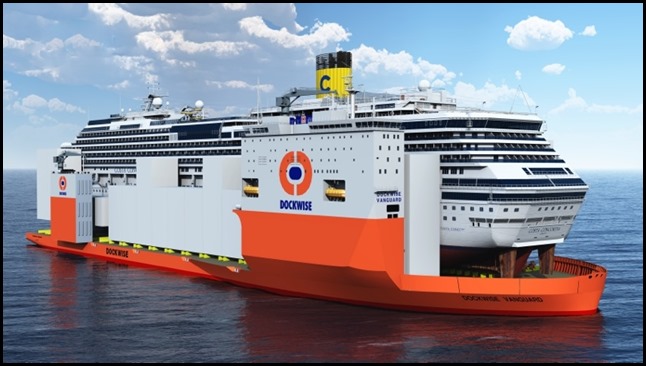A Flo / Flo Delight called
Black Marlin and Bits about her sisters.
Well what a difference, over to our
left is the coast of Pulau Batam, Indonesia and a tiny boat
with a couple of fishermen aboard. To our right the coast of Singapore.
loads of anchored chums and through the crowd a real gem.......
.............a terrific sight –
Black Marlin.
All sorts of equipment at the front and a Chinese vessel at the back.
I found an article on a website called Amusing Planet
called Heavy Lift Ships and their
Impossibly Massive Cargoes written
by Kaushik Saturday, May 05, 2012.
When you need to
transport large cargo, goods, and materials from one place to another, ship is
the ideal choice even though they are extremely slow. Thousands of cargo
carriers ply the world's seas and oceans each year, and they handle the bulk of
international trade. Then there are heavy lift ships that are designed to carry
excessively large loads that even cargo ships cannot bear, such as other ships,
drilling rigs or anything else too large or heavy to be easily transported on a
conventional ship.
Heavy lift ships are of two types: semi-submerging
capable of lifting another ship out of the water and transporting it; and
vessels that augment unloading facilities at inadequately equipped ports.
Semi-submerging are more commonly known as a "flo/flo" for float-on/float-off.
These vessels have a long and low well deck that can go down under water
allowing oil platforms, other vessels, or other floating cargo to be moved into
position for loading. The tanks are then pumped out, and the well deck rises
higher in the water, lifting its cargo, and is ready to sail wherever in the
world the cargo needs to be transported.
The
world's first heavy lift vessel was MV
Lichtenfels (118 long tons; 132 short tons (The British ton is the long ton, which
is 2240 pounds, and the U.S. ton is the short ton which is 2000 pounds.))
constructed in the 1920s by the Bremen
based shipping company DDG Hansa. After World War II, DDG Hansa became the
world's largest heavy lift shipping company. Today that title is owned by
Dockwise which currently operates 19 heavy lift ships – the world’s largest
fleet of semi-submersible vessels of various sizes and types.
The flo/flo industry's largest customer
base is the oil industry. They have transported many oil drilling rigs from
their construction site to the drilling site at roughly three to four times the
speed of a self-deploying rig.
In 1988, the heavy lift ship Mighty Servant 2 towed the guided
missile frigate USS Samuel B.
Roberts, which was nearly sunk by a naval mine in the central Persian
Gulf. Eleven years later, MV Blue
Marlin transported the U.S. guided missile destroyer USS Cole from Aden, Yemen to
Pascagoula, Mississippi, after the warship was damaged in a bombing attack on 12
October 2000.
In 2004, Blue Marlin carried the world's
largest semi-submersible oil platform, 60,000 tonne semi-submersible production
rig, Thunder Horse, over 15,000 nautical miles from Okpo, Korea to Corpus
Christi, Texas.
Many of the larger ships of this class
are owned by the company Dockwise, including Mighty Servant 1, MV Blue Marlin, and
MV Black Marlin. The company is
currently building another heavy weight named the Vanguard that will have 50% greater
lifting capacity and 70% greater deck area than the largest heavy lift ship now
in service, the Blue Marlin. At
275 meters (902 feet) long and 70 meters (230 feet) wide, the Vanguard can lift 110,000 tonnes and
travel across oceans at 14 knots.
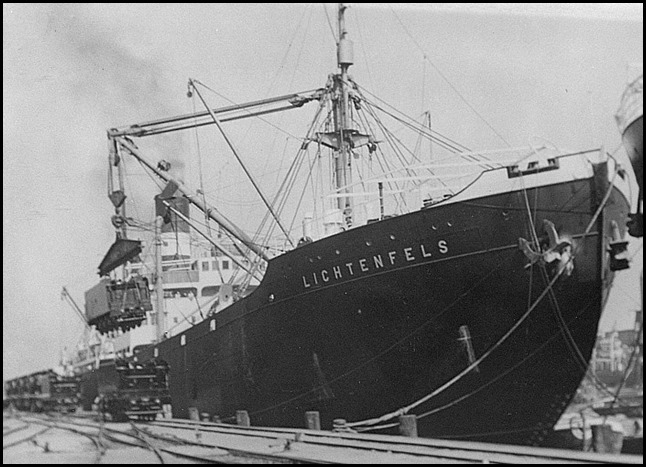
Lichtenfels
(mentioned in the article).
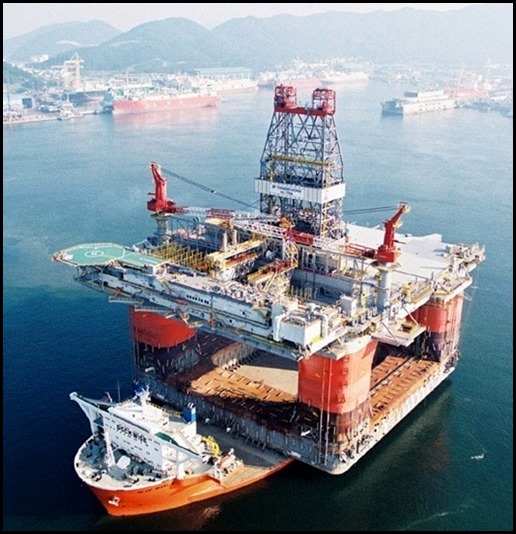
Blue
Marlin is more than 700 feet long and has 38 cabins that can
accommodate 60 people. The ship also has a sauna, swimming and workout
facilities. What a
sight she must have been with the gargantuan rig
aboard.
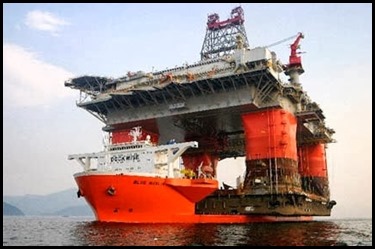
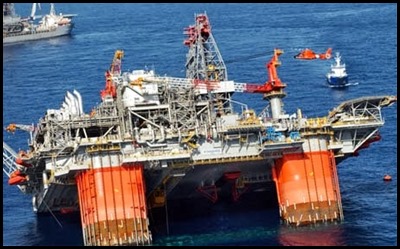
2004:
The Blue Marlin sailed
via the Cape of Good Hope in South Africa and 61 days and 16,000 miles later,
the mighty ship arrived at its destination. Only a year later, the Thunder Horse platform
was badly damaged by Hurricane Dennis.
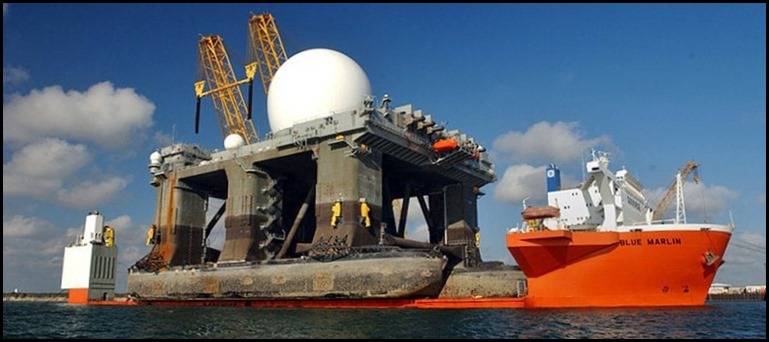
The
heavy lift vessel MV Blue Marlin with
her deck cargo of the Sea-Based X-Band Radar enters Pearl Harbour, Hawaii, after
completing a 15,000-mile journey from Corpus Christi, Texas, on January 9,
2006.
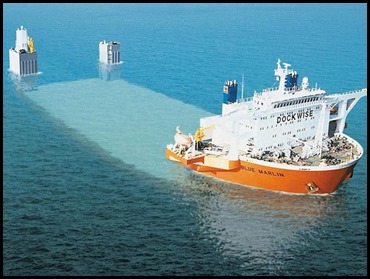
Blue Marlin in ready to
load mode.
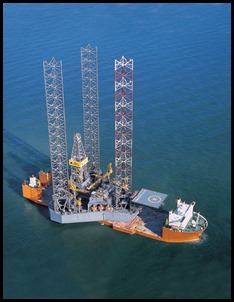
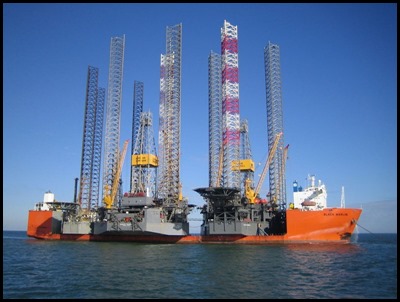
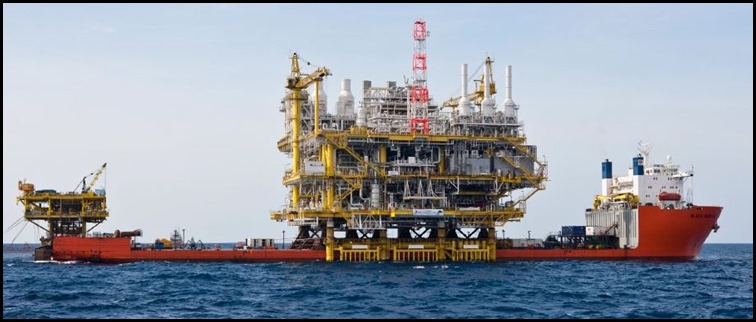
Black
Marlin carrying oil
rigs.
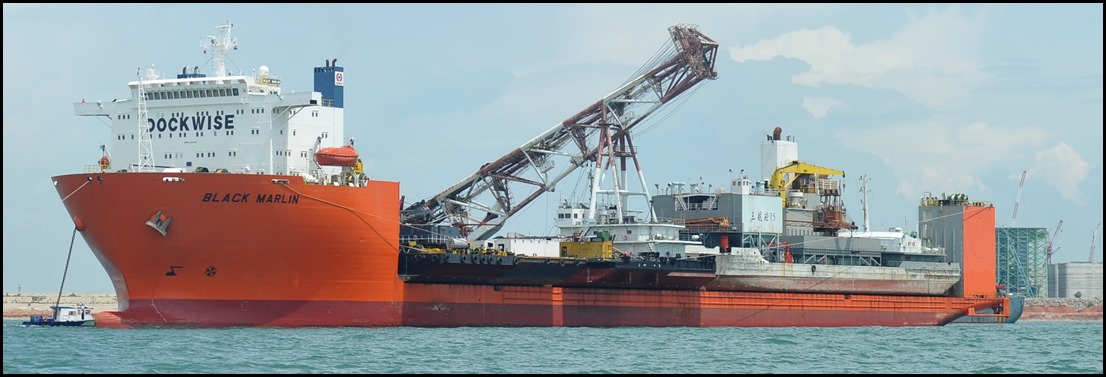
Back to today
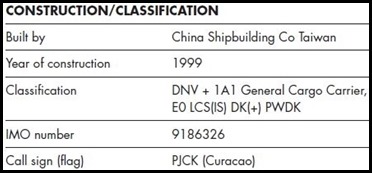
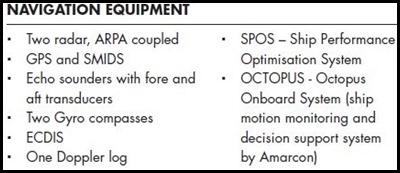
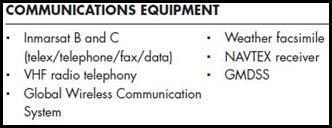
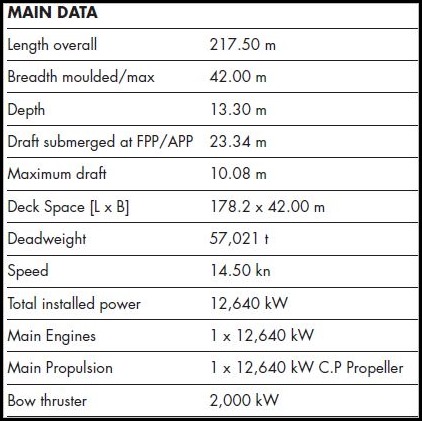
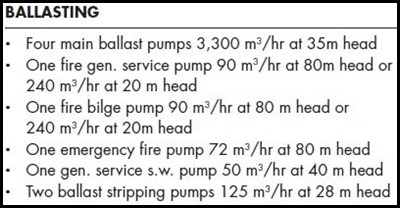
Black Marlin’s vital
statistics read like an impressive CV.
ALL IN ALL WHAT A SPECIAL LADY
FANTASTIC AND
UNUSUAL


